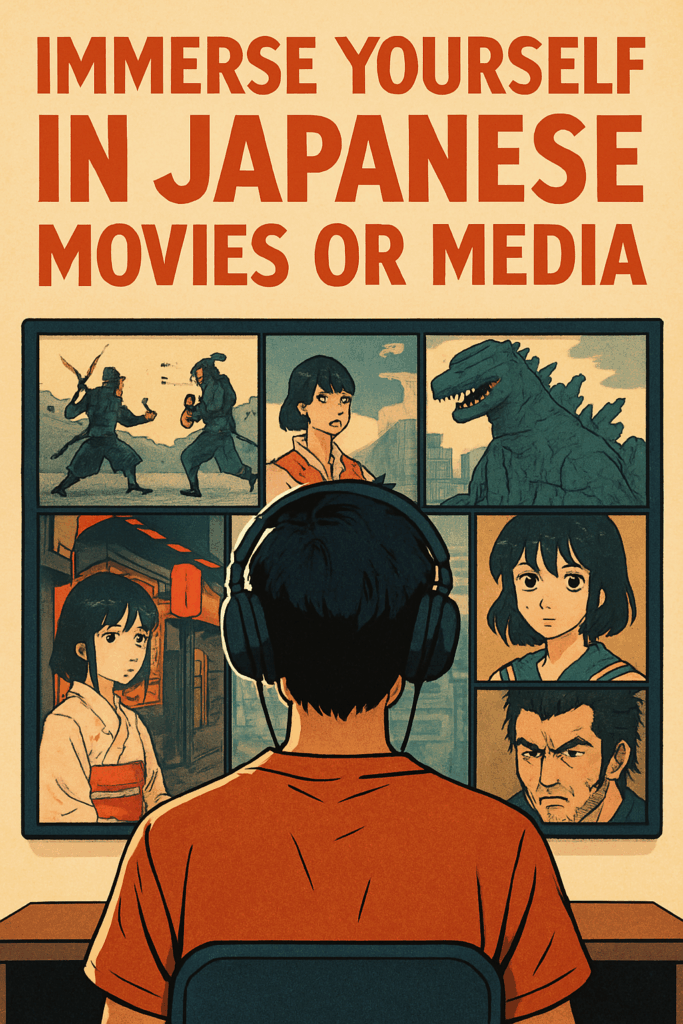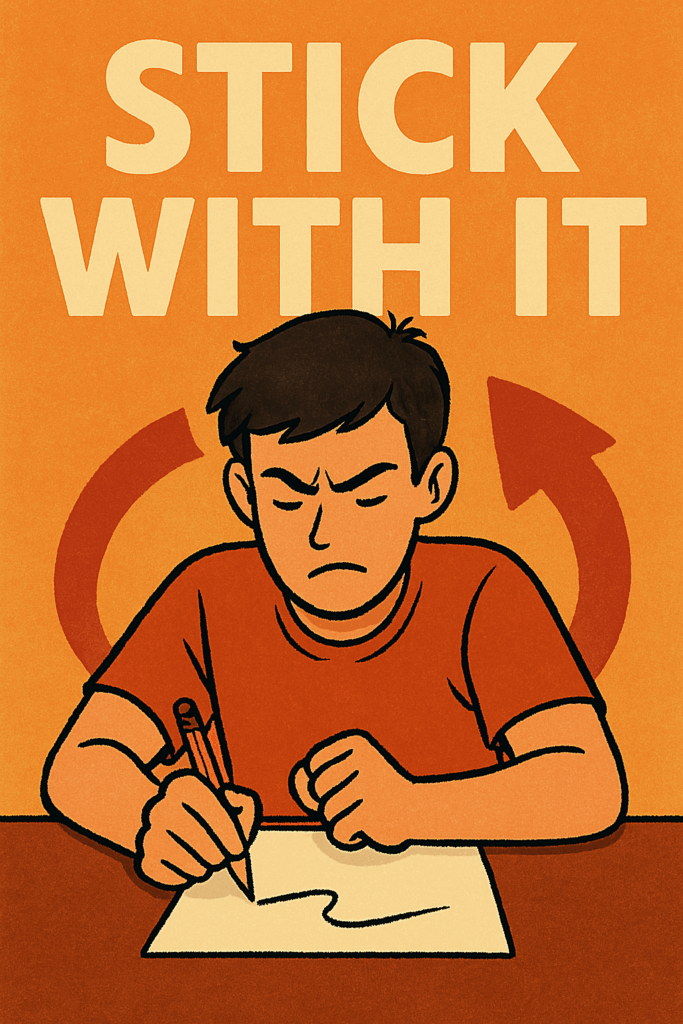In this article , i will discuss the Best Way To Learn Japanese by walking you through methods that really work.
Well cover soaking up anime and podcasts, studying bite-sized grammar, and chatting with friendly natives, so you can pick what clicks for you.
No matter if you just opened a textbook or youve already tackled kanji, these tips will keep you moving forward with trust and steady progress.
1. Immerse Yourself in Japanese Movies or Media
One of the easiest and most enjoyable ways to pick up Japanese is to dive into the worlds on-screen. Try bingeing anime, live-action dramas, classic films, or even lively YouTube channels.

This habit lets vocabulary, grammar, and accent slide into your mind without feeling like dull study. Start with English or Japanese subtitles, then switch to Japanese alone as you grow confident.
Real-life audio like this sharpens listening skills and reminds you that language lives outside the classroom.
Immerse Yourself in Japanese Movies or Media
Pros:
- Sharpens listening the easy way
- Exposes you to daily spoken language
- Makes study feel like free time
Cons:
- Can overload complete beginners
- Drills in casual slang and ticked phrases
- Stays passive unless you repeat aloud
2. Connect with the Culture
Japan is more than a language-its customs, food, and festivals give words richer meaning. When you learn why people bow or how honorifics work, everyday phrases suddenly click into place.

Adding culture notes to your notes turns flashcards into stories you actually care about. That spark of curiosity keeps your motivation high and pulls you beyond textbook pages.
Connect with Japanese Culture
Pros:
- Gives words real-life background
- Fuels steady excitement to keep learning
- Builds respect for jokes, manners, and customs
Cons:
- Customs can get tricky and layered
- Deep dives easily eat up hours
- Culture alone wont fix grammar gaps
3. Gamify Your Learning
Turning study into a game is an instant mood booster. Popular apps like Duolingo, LingoDeer, or Drops dress vocabulary drills in lively challenges.

You earn points, climb levels, and watch streaks grow, which feels more rewarding than paper quizzes. The result? Repetitive practice becomes a habit you look forward to, not a chore.
Turn Study Into a Game
Pros:
- Makes lessons feel like play
- Rewards streaks, not just scores
- Ideal for fast vocabulary and basics
Cons:
- Repeats same routine after weeks
- Rarely explains why rules work
- Skips larger sentence-building techniques
4. Find a Language Buddy
Speaking often is the only shortcut to real fluency. Pairing up with a language buddy-whether you meet face-to-face or log on from home-gives you safe space to try living, unscripted talk.

Apps like Tandem and HelloTalk let you chat and call with native speakers who want to learn your tongue in exchange for theirs. That give-and-take builds courage and shows you everyday Japanese as it occurs outside the classroom.
Pair Up with a Language Buddy
Pros:
- Live talking boosts ears and mouth
- Bridges social and cultural clues
- Builds solid confidence over time
Cons:
- Finding matching slots can frustrate
- Some partners teach, others just chat
- Pair shifts may send progress zigzagging
5. Learn Concepts, Not Chunks
Instead of cramming glossa ries or dry rules, dig into what each idea really means. Japanese grammar sometimes works in a way that feels sideways to English.

Grasping the difference between wa as topic and ga as subject, for instance, clears up a major fog and cuts down on guesswork.
When you learn concepts first, you lay a strong base and stop counting on word-for-word translation.
Explore the Power of Concept
Pros:
- Builds a deeper grasp of grammar
- Cuts reliance on word-for-word translation
- Encourages clearer, logical thinking in Japanese
Cons:
- Learning feels slower at first
- Abstract rules can puzzle new students
- Hard to use without real-life practice
6. Stick With It
Picking up a language is like training a muscle; it needs steady effort. Carving out the same 15 to 20 minutes each day keeps progress slow but sure. Routine cements memory and builds the momentum that stops interest from fading.

A little practice every day beats a long cram session once a week every time. Use calendars, gentle reminders, or habit-tracking tools so you never lose sight of that tiny daily goal.
Consistency Is Key
Pros:
- Ensures steady, noticeable progress
- Creates habits that stick
- Hammers lessons into long-term memory
Cons:
- Calls for strong self-control
- Gains can feel tiny day to day
- Missing days shatters good momentum
7. Don’t Fear Mistakes
Mistakes happen every time you learn. If you panic about being wrong, you freeze and stop talking or writing.

Japanese is full of tiny details, and even locals trip up on them. So treat each slip as a sign you are trying. The more you swing, the faster your skills sharpen. Practice builds confidence; perfection is a myth.
Dont Fear Mistakes
Pros:
- Pushes you to speak and write often
- Builds confidence almost right away
- Turns every error into a mini lesson
Cons:
- Can cement sloppy habits if unchecked
- May embarrass you in front of friends
- Demands mental strength to shrug off
8. Utilize Flashcards
Flashcards still work for vocab, kanji, and whole phrases. Tools like Anki or Quizlet space cards so you see them right before they fade.

That repeat habit locks words in your head long-term. Add a photo, doodle, or sample sentence if you learn better with pictures.
Utilize Flashcards
Pros:
- Perfect for word lists and kanji drills
- Spaced-rep shops ideas deep into memory
- Easy to tweak for your own targets
Cons:
- Cards can feel mind-numbingly dull
- They wont teach grammar or real use
- Risk falling into rote memorization
9. Practice Writing Regularly
Putting pen to page cements memory and sharpens sentence sense. Start by tracing easy sentences or a diary entry in Japanese.

Repeat hiragana, katakana, and key kanji until they sit comfortably. Once you feel ready, spill your own ideas, short essays, or social-media updates onto the page.
Practice Writing Regularly
Pros:
- Sticks grammar and vocab in your head
- Sharpen kanji reading and recall
- Teaches smoother sentence-building skills
Cons:
- Takes time most learners dont have
- Doodling kanji can be tough to master
10. Sign Up for a Language Class
Taking a set course gives you a clear path to follow. Whether it meets online or in a classroom, a good class pairs you with teachers, lets you ask questions, and connects you with fellow learners.

Check out Minato (from The Japan Foundation), use WaniKani to tackle kanji, or stop by a nearby school for face-to-face lessons. Courses also nudge you to study regularly and let you practice speaking in real time.
Join a Language Course
Pros
- Follows a clear step-by-step plan
- Gives advice from trained teachers
- Helps you study regularly and stay disciplined
Cons
- Class fees can add up fast
- Schedule may not suit self-paced learners
- Approach might not fit every students style
Conclusion
The easiest way to pick up Japanese is to mix many lessons and tools so that they fit your goals and your style. Watching shows, listening to music, and diving into local culture keep things fun and help the words stick.
Practicing with partners, showing up every day, and not fearing mistakes lead to real progress over time. Add flashcards, short writing drills, and a clear course, and youll have a steady, balanced path to fluency.









